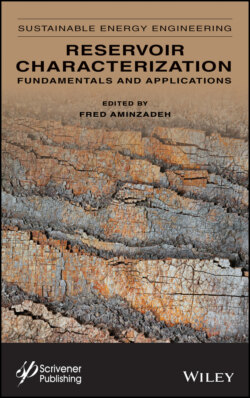Читать книгу Reservoir Characterization - Группа авторов - Страница 51
3.8 Conclusion
ОглавлениеNew algorithms and a methodology for machine learning one-class anomaly detection are presented. Detection of gas-filled sandstones, detection of abnormal pressure zones, and detection of gas-filled fractured carbonates are examples of geologic anomaly detection problems.
Three groups of AD classifiers were developed and tested for anomaly detection:
1 a. Universal classifiers applicable to detection of an anomaly of arbitrary type. Included among them is the distance from the center of the training set and the sparsity of neighbors from the training set.
2 b. Specialized methods designed for detection of an anomaly of a specifictype. An example of this type of method is the Bregman type divergenceclassifier designed for the detection of gas-filled sand anomalies.
3 c. New types of adaptable classifiers. An example of a classifier of this type isthe aggregated classifier.
4 d. All three groups of methods were tested for detection of the gas-filled sandanomaly with regular records presented by the records from the brine-filled sands and shales.
Statistical analysis presented in this paper illustrates that the specialized divergence classifier outperforms universal AD classifiers in detecting gas-filled sand anomalies. Its posterior discovery rate was as high as 84% with a false discovery rate smaller than 20%. Adaptable classifiers that do not need information about properties of anomalies have a posterior r discovery rate around 80% with false discovery close to around 20%. Universal methods have a lower posterior true discovery rate. The writers envision the main role of universal AD methods in the detection part of the anomaly as a first step in the adaptation of aggregated classifiers.
A combination of bootstrap and ROC curve analysis was used for analysis of the efficiency of the developed algorithms. In the framework of this approach multiple pairs of training and test sets were generated using bootstrap resampling of the analyzed data set. Then multiple ROC curves were generated. The set of generated ROC curves was subjected to statistical analysis with estimation of median AUC and lower and upper quantiles for the AUC values.
Several tests of the hypothesis related to the identification of anomaly type were completed. An instrument for testing the anomaly type hypothesis is the parameter named anomalyIdentifier which multiple values were generated via bootstrap. Poisson’s ratio was used as the anomaly characterization function. When the adaptable classifier was used for anomaly detection, test results were highly significant for sizes of the training set exceeding 10 records.
